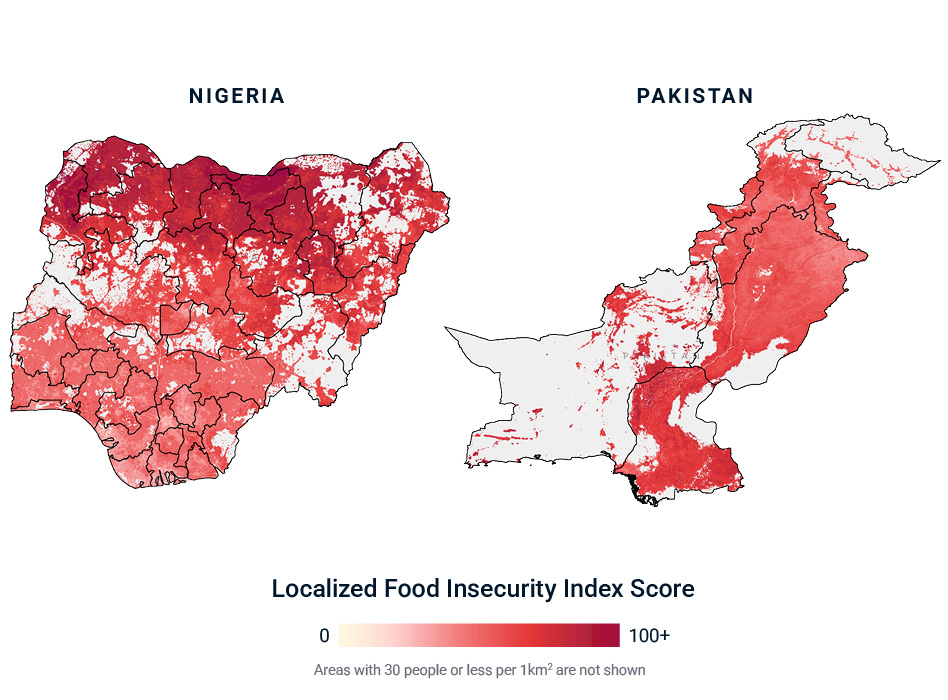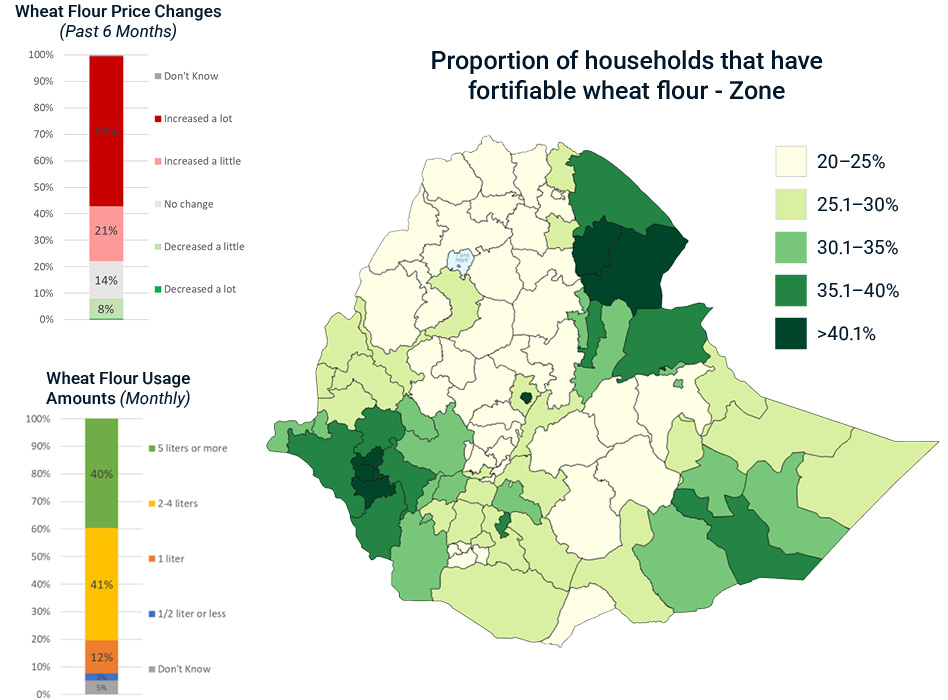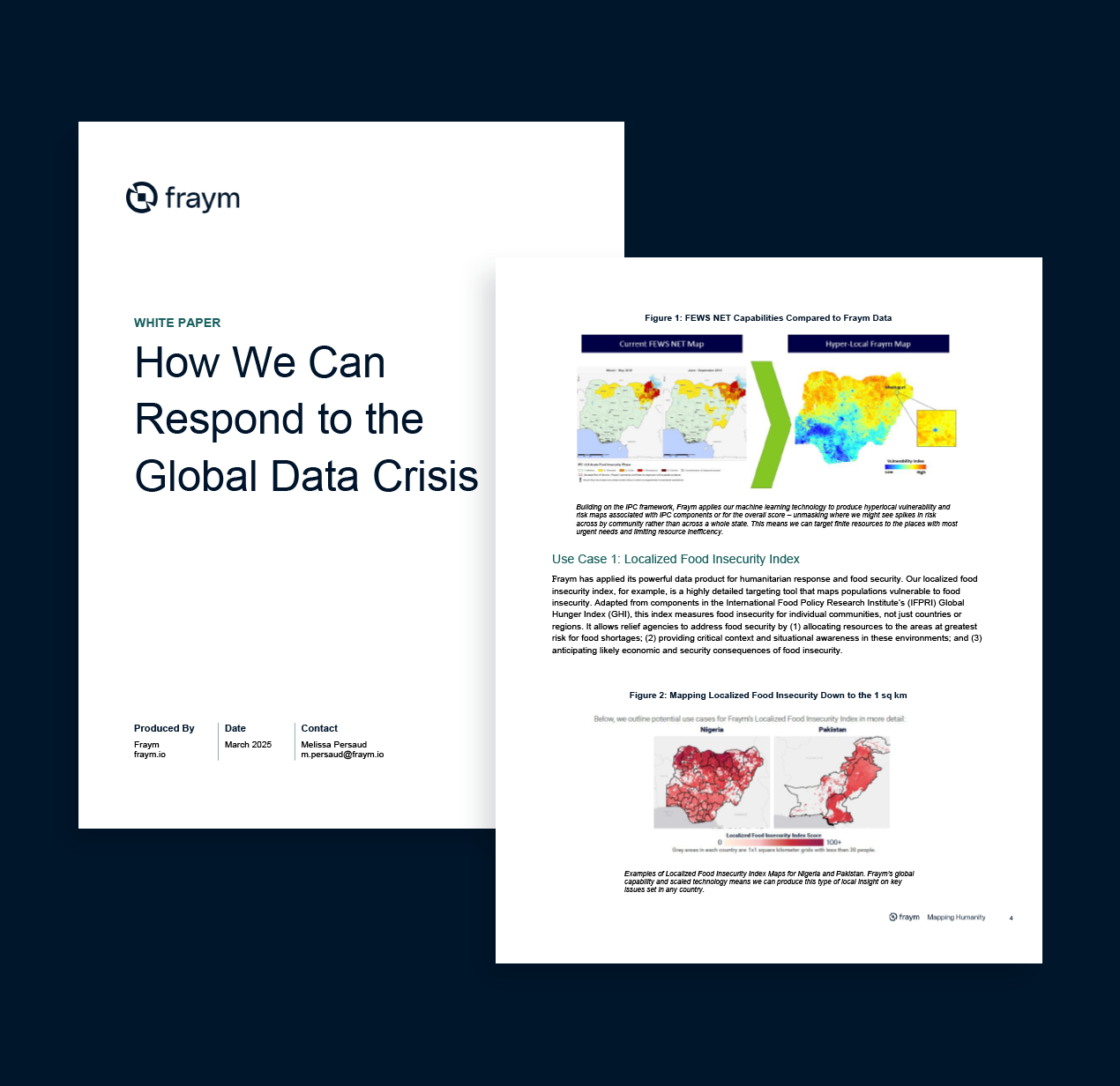Transforming Communities, Improving Health: Rethinking Sexual and Reproductive Health for Young People

The need for comprehensive and timely data is crucial in today’s world. With the loss of long-used data streams that monitor population-level needs and risks globally, including parts of the Famine Early Warning Systems Network (FEWS NET), it is imperative to employ a tested and credible alternative. Fraym’s technology offers a unique opportunity to meet this need and enhance the global system’s ability to respond to crises effectively.
Since Fraym’s founding in 2015, our mission to map humanity has resulted in producing hyperlocal data to understand localized risk, track changes over time, and highlight communities facing significant unmet needs. Technology offers the opportunity to rethink how we might deliver high-value food security monitoring efficiently and on a global scale.
Fraym leverages advanced AI/ML to generate hyperlocal population data at a 1km² resolution, combining survey and geospatial insights to map key socioeconomic and demographic indicators across entire countries. Technology such as Fraym’s can deliver critical insights at a higher frequency and with greater granularity at a fraction of the cost, bringing unprecedented opportunities to rethink how we track food security and famine globally.



By building on the Integrated Food Security Phase Classification (IPC) system framework, Fraym produces detailed vulnerability and risk maps, pinpointing at-risk areas and the underlying drivers of food insecurity at the community level. Fraym’s approach enables precise resource allocation, ensuring aid reaches those in the most urgent need efficiently anywhere in the world.
Fraym’s Localized Food Insecurity Index is a high-resolution tool that maps food insecurity at the community level, enabling aid organizations to allocate resources efficiently, enhance situational awareness, and anticipate economic and security risks. Built on IFPRI’s Global Hunger Index (GHI) framework, this data-driven approach ensures relief efforts target the most vulnerable populations. Fraym’s scalable technology can generate these insights globally, including in countries like Nigeria and Pakistan, providing critical intelligence for humanitarian response.
Fraym’s Fortified Food Access Index is another resource that combines community-level indicators on the availability, affordability, agency, and awareness of fortified foods. In late 2023 when Ethiopian wheat prices surged, this index sounded an early alarm of an emerging food and nutrition crisis and mapped which areas would be most impacted.
Fraym’s data-driven solutions empower humanitarian organizations to address global food security challenges effectively and ensure vulnerable populations receive timely assistance. As humanitarian organizations seek to track these issues globally, Fraym offers a proven, data-driven solution to bridge the gap. By leveraging AI and machine learning, we provide the insights needed to navigate an increasingly complex world and ensure no vulnerable population is left behind.

Fill out the form below to receive the white paper